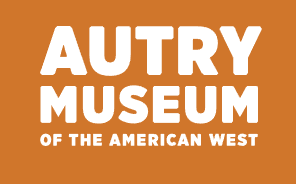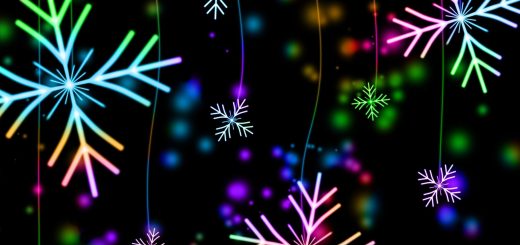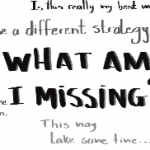Searching for enrichment? Here are 5 ways to honor Native American Heritage Month with your kids!

visit a museum
Instead of highlighting just one museum we found this great article from powwows.com where they’ve highlighted 10 of their favorite museums. The choices they offer span across our great country. To read the article, click HERE.
But we don’t want to leave you with just that, we’d also like to give a personal recommendation, and highlight one small museum in Southern California. The Chumash Indian Museum located in Thousand Oaks, CA is more of a living history center. It’s perfect for an educational day trip or to visit virtually. You can learn about the plants of the region, explore the demonstration village and see a Chumash homestead as if it were preserved in time. If you can’t make it to the museum, check out their educational resources for videos, activities and plant guide. This fun video shows you how to play a walnut dice game which is a traditional Chumash pastime.
If you are in the Los Angeles area, The Chumash Museum is having Wildlife Day on November 13th from 11am-3pm. This is a family-friendly event that teaches us how to coexist with wild animals in our area. Admission: $5 adult, $3 child/senior. For more information, please visit the Chumash Museum website HERE.
read a book about or by a Native American

We came across one of our new found favorite resources and they have a beautiful collection of books for children in pre-k to 7th grade. The Reading is Fundamental site honors both Native American stories and authors in this 21 booklist.
Here is a description from their website: “Celebrate the ancestry and traditions of Native Americans with books and resources to enjoy throughout the year. Find activities, lesson plans, and puzzles to go with books by treasured authors including Joseph Bruchac, John Steptoe, Donald F. Montileaux, Harriet Peck Taylor, and more.”
For the Reading is Fundamental website, click HERE.

If you have a child who is a fact finder, this book is for them! It’s such an interesting subject and out of the ordinary. The Smithsonian’s National Museum of the American Indian has put together this 256 page book with over 60 illustrations for the curious reader. Here is a brief description of Do All Indians Live in Tipis: Questions & Answers from the National Museum of the American Indian, Second Edition “From Pocahontas to popular film, and from reservation life to the “urban Indian” experience, the experts of the Smithsonian’s National Museum of the American Indian debunk the most common myths and answer the most frequently asked questions about Native Americans. You will discover the facts about sport mascots, casinos, dream catchers, and much more. Accessible and informative, this is the perfect introduction to the diverse, contemporary peoples of the Americas.”
For more books and products from the National Museum of the American Indian please click HERE.

Our last recommendation comes from AILA. We’ve included this selection for the middle school or young adult reader. The American Indian Library Association highlights the best writing and illustrations by Native Americans and Indigenous peoples of North America. Here is a brief description: “Books selected to receive the award, present Indigenous North American peoples in the fullness of their humanity. Winners and Honor Books were selected in the categories Best Picture Book, Best Middle Grade Book, and Best Young Adult Book.”
To Check out their 2020 Award Winners please click HERE.
check out this podcast/video
Check out the Smithsonian’s National Air & Space Museum podcast: AIRSPACE. This episode: Leaving for Paris is highlighting and celebrating 100 years or the centennial of when Bessie Coleman first earned her pilot’s license. Did you know she was the 1st African American Woman and 1st Native American to hold a Pilot’s license?
Please enjoy this educational and enlightening podcast. It’s about 15 minutes long and even if you think you don’t have the time, give it a chance, put it on in the car on the way to a game, practice, or the grocery store. I’ve included it as a bedtime story for my kids.
Check out the podcast HERE.
learn a Native American inspired craft
We found this site to be insightful, informative, and extremely enriching. As she mentions in her profile on Teacher Pay Teachers, she hopes her lessons are meaningful and can shine a light, while bringing a modern perspective to indigenous people and culture. There are accompanying book recommendations and cross cultural lessons too. If you happen to be a teacher or are interested as a parent to support the curriculum your child is learning at school, this site provides the curricular connection, grade level, the element or principal of art and the tribe and or region with each lesson. It is such a well rounded resource to honor, learn, and appreciate Native American history and heritage.
To go to the website please click HERE.

Look at nature all around you and make art! Learn about native plants with this Native Plant Leaf Rubbing Activity on The Autry Museum website. Detailed instructions can be found HERE. In addition to this activity, The Autry Museum offers many educational resources for families including webinars and educational videos. The Autry brings together the stories of all peoples of the American West, connecting the past with the present to inspire our shared future.
did you know?
Did you know that there are many varieties of corn that come in different colors? I was intrigued by a story by the NPR station CAI about a Mashpee Wampanoag woman who was gifted King Philips corn seeds in an effort to “reconnect Indigenous communities back with their heirloom seeds.” This corn is known for its reddish kernels! You can hear the NPR story HERE.
This led me to research more about the diversity of corn and found this wonderful article on NPR from Nebraska Public Media HERE. There is also video of Taylor Keen, a member of both the Omaha Tribe in Nebraska and the Cherokee Nation in Oklahoma. Mr. Keen planted a variety of corn, beans, squash and sunflowers in his backyard and calls them “the four sisters.”
The Four Sisters Method of gardening is a form of companion planting that helps each other grow and thrive. More about The Four Sisters HERE.
In this video, he explains his methods, his inspiration behind converting his backyard into a farm and shows us all the different kinds of corn, in all different colors and sizes. I hope you enjoy it as much as we did.






